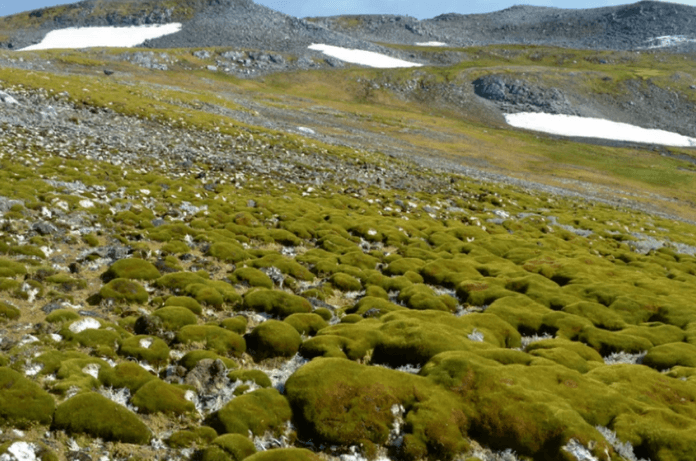Have you ever thought about Antarctica as anything other than a huge ice desert? It might sound like something out of a movie, but guess what? Antarctica, the fifth-largest continent, the icy Antarctica is actually turning green! That’s right! This surprising change is happening faster than many of us realize.
What’s Going On in Antarctica?
Antarctica has long been known for its ice and cold temperatures. It’s mostly white, with a few penguins and seals here and there. But scientists have recently noticed a big change. The scientists along with researchers at the University of Exeter, UK, used satellite data to estimate the greening rate in Antarctica.
In a study published in Nature Geoscience, researchers found that this greening trend accelerated (2016-2021), relative to the full analysis of Landsat archives (1986–2021).
The research has been carried out using a Google Earth Engine cloud-processing workflow to suggest widespread greening across the Antarctic Peninsula. The rates of warming are higher in the West Antarctic and Antarctic Peninsula regions and occurring much faster than global average warming.
For a long time, only a few tough plants, like mosses and algae, could survive there, says Dr Thomas Roland from the University of Exeter. The landscape is still almost entirely dominated by snow, ice, and rock, with only a tiny fraction colonized by plant life. But with climate change, things are starting to shift.

Warmer temperatures are allowing these plants to grow in areas that were once too cold and icy. Researchers said that the overall increase in vegetation cover through the 2013 – 2016 period.
What’s Causing This Change?
So, what’s behind this surprising greening of Antarctica? Let’s break it down:
- Warmer Temperatures: One major reason is that temperatures in Antarctica are rising. On average, the temperature has gone up by more than 3°C in some areas since the 1950s. Warmer summers mean that plants can grow for longer periods.
- Melting Ice: As the ice melts, it reveals land that was hidden. This newly exposed land is perfect for plants to take root. Researchers have found that melting glaciers create areas rich in nutrients, making it easier for mosses to thrive.
- Nutrients in the Soil: When ice melts, it releases nutrients into the soil. These nutrients are great for plant growth. The areas that were once barren are now becoming greener and healthier.
- Local Climate Changes: Some parts of Antarctica are experiencing small changes in climate due to shifting winds and ocean currents. These tiny shifts create warmer spots, which help plants grow even more.
Why Should We Care?
Now you might be thinking, “So what if there’s more moss?” But the truth is, this change has bigger implications for our earth. Here’s why it’s important:
- Feedback Loops: Plants absorb carbon dioxide, a gas that contributes to climate change. While more plants may help for now, if they die or decay, they could release stored carbon back into the air. This can lead to even more warming.
- Ecosystem Changes: A greener Antarctica means changes for animals that live there. Species like penguins and seals rely on their habitats for food and breeding. If their environment changes too quickly, it could be hard for them to adapt.
- Weather Patterns: The changes in Antarctica could affect weather patterns all over the world. Melting ice contributes to rising sea levels, which threaten coastal communities. So, what happens in Antarctica doesn’t stay there!
- Biodiversity: While new plant growth can be a good thing, it can also lead to competition between species. Some native plants may struggle to survive as new plants take over. This could disrupt the balance of the ecosystem.
How can we help?
Feeling a bit overwhelmed? Don’t worry! There are lots of simple things we can do to help the planet and make a difference:
Stay Informed: Knowledge is key. Keep learning about climate change and its effects. Follow trustworthy news sources and share what you find with your friends and family.
Reduce Your Carbon Footprint: You can make small changes in your daily life that add up! Try biking or walking instead of driving, use public transportation, and save energy at home by turning off lights when you leave a room.
Support Renewable Energy: If you can, think about using renewable energy sources, like solar panels. Supporting clean energy initiatives helps reduce greenhouse gas emissions.

